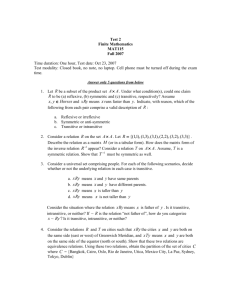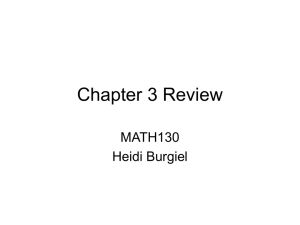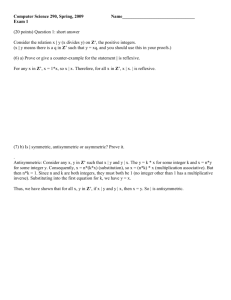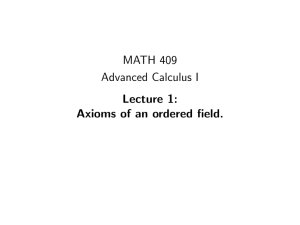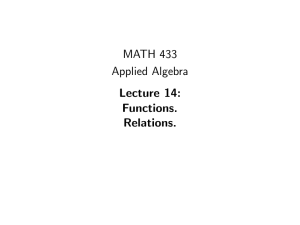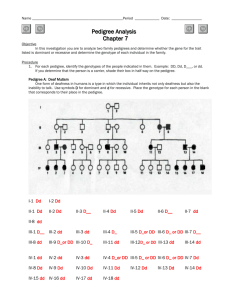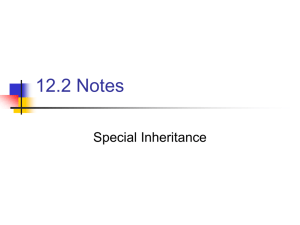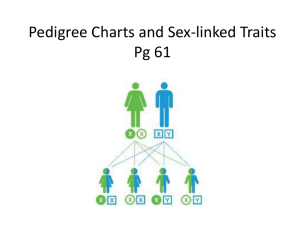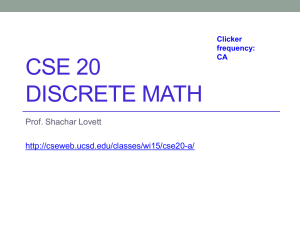MATH 433 Applied Algebra Lecture 7: Functions.
advertisement
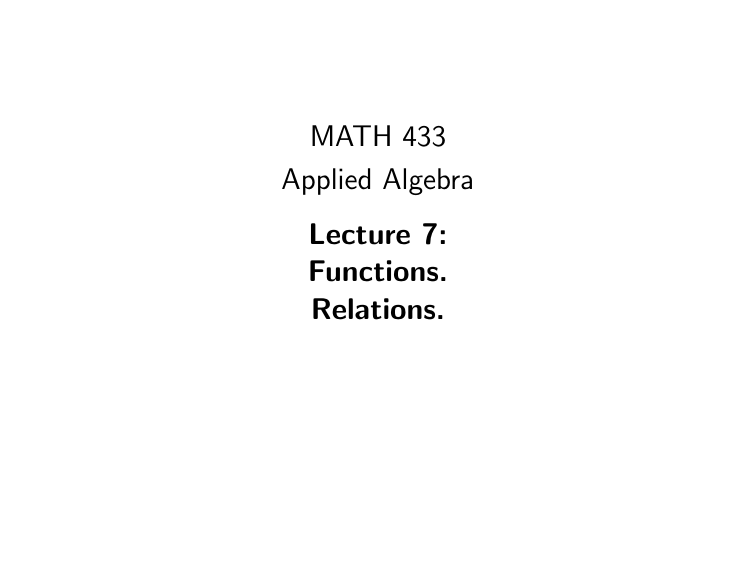
MATH 433 Applied Algebra Lecture 7: Functions. Relations. Cartesian product Definition. The Cartesian product X × Y of two sets X and Y is the set of all ordered pairs (x, y ) such that x ∈ X and y ∈ Y . The Cartesian square X × X is also denoted X 2 . If the sets X and Y are finite, then #(X × Y ) = (#X )(#Y ), where #S denote the number of elements in a set S. Functions A function f : X → Y is an assignment: to each x ∈ X we assign an element f (x) ∈ Y . The graph of the function f : X → Y is defined as the subset of X × Y consisting of all pairs of the form (x, f (x)), x ∈ X . Definition. A function f : X → Y is surjective (or onto) if for each y ∈ Y there exists at least one x ∈ X such that f (x) = y . The function f is injective (or one-to-one) if f (x ′ ) = f (x) =⇒ x ′ = x. Finally, f is bijective if it is both surjective and injective. Equivalently, if for each y ∈ Y there is exactly one x ∈ X such that f (x) = y . The inverse function f −1 exists if and only if f is bijective. y f a b c d e g i 0 h j k l m x Relations Definition. Let X and Y . A relation R from X to Y is simply a subset of the Cartesian product: R ⊂ X ×Y. If (x, y ) ∈ R, then we say that x is related to y (in the sense of R or by R) and write xRy . Remark. Usually X = Y , in which case we talk of a relation on X . Examples. • “is equal to” xRy ⇐⇒ x = y Equivalently, R = (X ∩ Y ) × (X ∩ Y ). • “is not equal to” xRy ⇐⇒ x 6= y • “is mapped by f to” xRy ⇐⇒ y = f (x), where f : X → Y is a function. Equivalently, R is the graph of the function f . • “is the image under f of” (from Y to X ) yRx ⇐⇒ y = f (x), where f : X → Y is a function. If f is invertible, then R is the graph of f −1 . • reversed R ′ xRy ⇐⇒ yR ′ x, where R ′ is a relation from Y to X . • not R ′ xRy ⇐⇒ not xR ′ y , where R ′ is a relation from X to Y . Equivalently, R = (X × Y ) \ R ′ (set difference) Relations on a set • “is equal to” xRy ⇐⇒ x = y • “is not equal to” xRy ⇐⇒ x 6= y • “is less than” X = R, xRy ⇐⇒ x < y • “is less than or equal to” X = R, xRy ⇐⇒ x ≤ y • “is contained in” X = the set of all subsets of some set Y , xRy ⇐⇒ x ⊂ y • “is congruent modulo n to” X = Z, xRy ⇐⇒ x ≡ y mod n • “divides” X = P, xRy ⇐⇒ x|y A relation R on a finite set X can be represented by a directed graph. Vertices of the graph are elements of X , and we have a directed edge from x to y if and only if xRy . Another way to represent the relation R is the adjacency table. Rows and columns are labeled by elements of X . We put 1 at the intersection of a row x with a column y if xRy . Otherwise we put 0. a b e c d b c a a 0 b 0 c 1 a b 1 1 0 c 1 1 0 a b c d e a 0 0 0 0 1 b 1 1 0 0 0 c 1 1 0 0 0 d 0 0 1 0 0 e 0 0 0 1 0 Properties of relations Definition. Let R be a relation on a set X . We say that R is • reflexive if xRx for all x ∈ X , • symmetric if, for all x, y ∈ X , xRy implies yRx, • antisymmetric if, for all x, y ∈ X , xRy and yRx cannot hold simultaneously, • weakly antisymmetric if, for all x, y ∈ X , xRy and yRx imply that x = y , • transitive if, for all x, y , z ∈ X , xRy and yRz imply that xRz. Partial ordering Definition. A relation R on a set X is a partial ordering (or partial order) if R is reflexive, weakly antisymmetric, and transitive: • xRx, • xRy and yRx =⇒ x = y , • xRy and yRz =⇒ xRz. A relation R on a set X is a strict partial order if R is antisymmetric and transitive: • xRy =⇒ not yRx, • xRy and yRz =⇒ xRz. Examples. “is less than or equal to”, “is contained in”, “is a divisor of” are partial orders. “is less than” is a strict order. Equivalence relation Definition. A relation R on a set X is an equivalence relation if R is reflexive, symmetric, and transitive: • xRx, • xRy =⇒ yRx, • xRy and yRz =⇒ xRz. Examples. “is equal to”, “is congruent modulo n to” are equivalence relations. Given an equivalence relation R on X , the equivalence class of an element x ∈ X relative to R is the set of all elements y ∈ X such that yRx. Theorem The equivalence classes form a partition of the set X , which means that • any two equivalence classes either coincide, or else they are disjoint, • any element of X belongs to some equivalence class.
